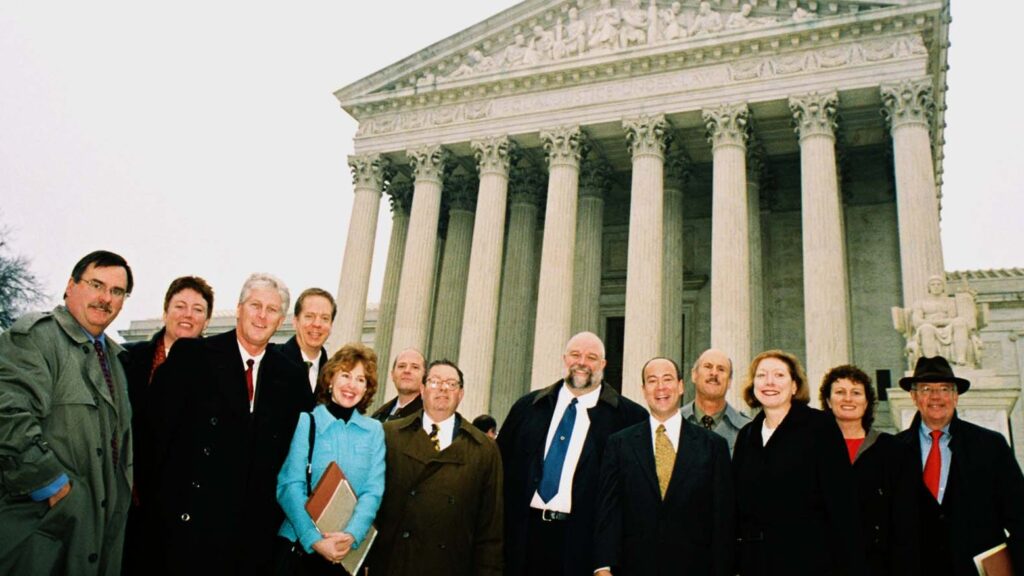May 16, 2025, marks the 20th anniversary of a landmark moment for wine lovers, wineries, and common sense: the U.S. Supreme Court’s 2005 decision in Granholm v. Heald which was a milestone in the fight for winery-to-consumer direct shipping. While it didn’t make national headlines for long, its impact has been aging beautifully — like a fine wine — for two decades. And on the 20th anniversary of the decision, Free the Grapes! is raising a glass to the case that reshaped the American wine market.

A Vintage Ruling
In Granholm v. Heald, the Supreme Court ruled that states could not discriminate against out-of-state wineries in their direct-to-consumer (DTC) shipping laws. Specifically, it struck down laws in Michigan and New York that allowed in-state wineries to ship directly to consumers but blocked out-of-state wineries from doing the same. The 5–4 decision declared that such protectionism violated the Commerce Clause of the U.S. Constitution.
Translation? The concept in discussion here is reciprocity – “a winery in your state can ship to a consumer in my state, only if a winery in my state can ship to a consumer in your state.”
What these cases in Granholm v Heald were arguing for is to remove that reciprocity barrier. Make it simple: If a state lets local wineries ship to customers’ doors, it has to let out-of-state wineries do it too. The court uncorked the bottle of fairness, and the ripple effects were immediate.
The Direct Shipping Boom
Before the decision, the map of the U.S. was a patchwork of differing stances on direct shipping. About 12 states allowed for direct shipping, 13 allowed for it but with significant restrictions, and the rest - nearly half the country - prohibited direct shipping altogether. Winery-to-consumer direct shipping reached less than 51% of the adult population. Small and mid-sized wineries in particular — whose wines might not be able to reach the grocery store shelf — were locked out of access to national markets. Consumers were stuck too, often unable to legally purchase a favorite wine they discovered on vacation or at a tasting.
After Granholm, the wine world changed. The decision opened the door for an explosion of growth in DTC sales, expanded consumer choice, and a stronger connection between producer and enthusiast. It empowered family-run wineries from Oregon to Virginia to build national audiences. And it sparked innovation in compliance, logistics, and e-commerce.
But the Work Isn’t Done
While the decision was a legal watershed, it didn’t eliminate all obstacles. Many states still impose burdensome regulations, high fees, or capricious limits that chill interstate winery-to-consumer shipping. Some still resist change altogether, influenced by entrenched lobbies that favor distributors or other groups. That’s why Free the Grapes! continues to advocate for wine lovers’ rights, educating consumers and mobilizing grassroots support to modernize state laws.
The Next 20 Years of Winery-to-Consumer Direct Shipping
Granholm v. Heald proved that progress is possible when consumers, wineries, and advocates raise their voices. As we look ahead, the momentum is on our side. E-commerce is second nature. Consumers expect (and deserve) access. And the idea that consumers and wineries should be able to enjoy legal, regulated shipments across state lines is no longer radical — it’s common sense.
Here’s to 20 years of direct connection — and to the day that all wine-loving Americans have free and clear consumer choice in their purchases.
Cheers to that.
